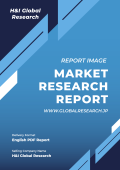Table of Contents
1 Industry Overview of Mercury
1.1 Definition and Specifications of Mercury
1.1.1 Definition of Mercury
1.1.2 Specifications of Mercury
1.2 Classification of Mercury
1.3 Applications of Mercury
1.3.1 Nuclear Application
1.3.2 Non-Nuclear Application
1.4 Industry Chain Structure of Mercury
1.5 Industry Overview and Major Regions Status of Mercury
1.5.1 Industry Overview of Mercury
1.5.2 Global Major Regions Status of Mercury
1.6 Industry Policy Analysis of Mercury
1.7 Industry News Analysis of Mercury
2 Manufacturing Cost Structure Analysis of Mercury
2.1 Raw Material Suppliers and Price Analysis of Mercury
2.2 Equipment Suppliers and Price Analysis of Mercury
2.3 Labor Cost Analysis of Mercury
2.4 Other Costs Analysis of Mercury
2.5 Manufacturing Cost Structure Analysis of Mercury
2.6 Manufacturing Process Analysis of Mercury
3 Technical Data and Manufacturing Plants Analysis of Mercury
3.1 Capacity and Commercial Production Date of Global Mercury Major Manufacturers in 2023
3.2 Manufacturing Plants Distribution of Global Mercury Major Manufacturers in 2023
3.3 R&D Status and Technology Source of Global Mercury Major Manufacturers in 2023
3.4 Raw Materials Sources Analysis of Global Mercury Major Manufacturers in 2023
4 Capacity, Production and Revenue Analysis of Mercury by Regions, Types and Manufacturers
4.1 Global Capacity, Production and Revenue of Mercury by Regions 2019-2024
4.2 Global and Major Regions Capacity, Production, Revenue and Growth Rate of Mercury 2019-2024
4.3 Global Capacity, Production and Revenue of Mercury by Types 2019-2024
4.4 Global Capacity, Production and Revenue of Mercury by Manufacturers 2019-2024
5 Price, Cost, Gross and Gross Margin Analysis of Mercury by Regions, Types and Manufacturers
5.1 Price, Cost, Gross and Gross Margin Analysis of Mercury by Regions 2019-2024
5.2 Price, Cost, Gross and Gross Margin Analysis of Mercury by Types 2019-2024
5.3 Price, Cost, Gross and Gross Margin Analysis of Mercury by Manufacturers 2019-2024
6 Consumption Volume, Consumption Value and Sale Price Analysis of Mercury by Regions, Types and Applications
6.1 Global Consumption Volume and Consumption Value of Mercury by Regions 2019-2024
6.2 Global and Major Regions Consumption Volume, Consumption Value and Growth Rate of Mercury 2019-2024
6.3 Global Consumption Volume and Consumption Value of Mercury by Types 2019-2024
6.4 Global Consumption Volume and Consumption Value of Mercury by Applications 2019-2024
6.5 Sale Price of Mercury by Regions 2019-2024
6.6 Sale Price of Mercury by Types 2019-2024
6.7 Sale Price of Mercury by Applications 2019-2024
6.8 Market Share Analysis of Mercury by Different Sale Price Levels
7 Supply, Import, Export and Consumption Analysis of Mercury
7.1 Supply, Consumption and Gap of Mercury 2019-2024
7.2 Global Capacity, Production, Price, Cost, Revenue, Supply, Import, Export and Consumption of Mercury 2019-2024
7.3 USA Capacity, Production, Price, Cost, Revenue, Supply, Import, Export and Consumption of Mercury 2019-2024
7.4 EU Capacity, Production, Price, Cost, Revenue, Supply, Import, Export and Consumption of Mercury 2019-2024
7.5 China Capacity, Production, Price, Cost, Revenue, Supply, Import, Export and Consumption of Mercury 2019-2024
7.6 Japan Capacity, Production, Price, Cost, Revenue, Supply, Import, Export and Consumption of Mercury 2019-2024
8 Major Manufacturers Analysis of Mercury
8.1 Manufacturer One
8.1.1 Company Profile
8.1.2 Product Picture and Specifications
8.1.2.1 Type I
8.1.2.2 Type II
8.1.2.3 Type III
8.1.3 Capacity, Production, Price, Cost, Gross and Revenue
8.1.4 Contact Information
8.2 Manufacturer Two
8.2.1 Company Profile
8.2.2 Product Picture and Specifications
8.2.2.1 Type I
8.2.2.2 Type II
8.2.2.3 Type III
8.2.3 Capacity, Production, Price, Cost, Gross and Revenue
8.2.4 Contact Information
8.3 Manufacturer Three
8.3.1 Company Profile
8.3.2 Product Picture and Specifications
8.3.2.1 Type I
8.3.2.2 Type II
8.3.2.3 Type III
8.3.3 Capacity, Production, Price, Cost, Gross and Revenue
8.3.4 Contact Information
8.4 Manufacturer Four
8.4.1 Company Profile
8.4.2 Product Picture and Specifications
8.4.2.1 Type I
8.4.2.2 Type II
8.4.2.3 Type III
8.4.3 Capacity, Production, Price, Cost, Gross and Revenue
8.4.4 Contact Information
8.5 Manufacturer Five
8.5.1 Company Profile
8.5.2 Product Picture and Specifications
8.5.2.1 Type I
8.5.2.2 Type II
8.5.2.3 Type III
8.5.3 Capacity, Production, Price, Cost, Gross and Revenue
8.5.4 Contact Information
…
9 Marketing Trader or Distributor Analysis of Mercury
9.1 Marketing Channels Status of Mercury
9.2 Traders or Distributors with Contact Information of Mercury by Regions
9.3 Ex-work Price, Channel Price and End Buyer Price Analysis of Mercury
9.4 Regional Import, Export and Trade Analysis of Mercury
10 Industry Chain Analysis of Mercury
10.1 Upstream Major Raw Materials Suppliers Analysis of Mercury
10.1.1 Major Raw Materials Suppliers with Contact Information Analysis of Mercury
10.1.2 Major Raw Materials Suppliers with Supply Volume Analysis of Mercury by Regions
10.2 Upstream Major Equipment Suppliers Analysis of Mercury
10.2.1 Major Equipment Suppliers with Contact Information Analysis of Mercury
10.2.2 Major Equipment Suppliers with Product Pictures Analysis of Mercury by Regions
10.3 Downstream Major Consumers Analysis of Mercury
10.3.1 Major Consumers with Contact Information Analysis of Mercury
10.3.2 Major Consumers with Consumption Volume Analysis of Mercury by Regions
10.4 Supply Chain Relationship Analysis of Mercury
11 Development Trend of Analysis of Mercury
11.1 Capacity, Production and Revenue Forecast of Mercury by Regions and Types
11.1.1 Global Capacity, Production and Revenue of Mercury by Regions 2024-2029
11.1.2 Global and Major Regions Capacity, Production, Revenue and Growth Rate of Mercury 2024-2029
11.1.3 Global Capacity, Production and Revenue of Mercury by Types 2024-2029
11.2 Consumption Volume and Consumption Value Forecast of Mercury by Regions, Types and Applications
11.2.1 Global Consumption Volume and Consumption Value of Mercury by Regions 2024-2029
11.2.2 Global and Major Regions Consumption Volume, Consumption Value and Growth Rate of Mercury 2024-2029
11.2.3 Global Consumption Volume and Consumption Value of Mercury by Types 2024-2029
11.2.4 Global Consumption Volume and Consumption Value of Mercury by Applications 2024-2029
11.3 Supply, Import, Export and Consumption Forecast of Mercury
11.3.1 Supply, Consumption and Gap of Mercury 2024-2029
11.3.2 Global Capacity, Production, Price, Cost, Revenue, Supply, Import, Export and Consumption of Mercury 2024-2029
11.3.3 USA Capacity, Production, Price, Cost, Revenue, Supply, Import, Export and Consumption of Mercury 2024-2029
11.3.4 EU Capacity, Production, Price, Cost, Revenue, Supply, Import, Export and Consumption of Mercury 2024-2029
11.3.5 China Capacity, Production, Price, Cost, Revenue, Supply, Import, Export and Consumption of Mercury 2024-2029
11.3.6 Japan Capacity, Production, Price, Cost, Revenue, Supply, Import, Export and Consumption of Mercury 2024-2029
12 New Project Investment Feasibility Analysis of Mercury
12.1 New Project SWOT Analysis of Mercury
12.2 New Project Investment Feasibility Analysis of Mercury
13 Conclusion of the Global Mercury (CAS 7439-97-6) Industry 2024 Market Research Report
| ※参考情報 水銀(Mercury)は、元素記号Hg(ラテン語のHydragyrumに由来)で表される化学元素であり、周期表では第80番目に位置しています。水銀は常温で液体として存在する珍しい金属であり、特有の物理的および化学的特性を持っています。 水銀の主な特徴として、その高い密度があります。水銀の密度は、約13.6 g/cm³で、一般的な金属に比べて非常に重い部類に入ります。このため、水銀は温度計やバロメーターなどの計測器で広く使用されてきました。また、水銀は非常に良い導電体であり、電気的特性が高いため、電子機器や電気機器にも利用されていることがあります。 水銀は、非常に低い蒸気圧を持っていますが、それでも他の金属に比べて揮発性があります。この特性のため、水銀の蒸気は空気中に容易に存在することができ、吸入することで毒性を及ぼす可能性があります。水銀は生物に対して有害であり、特に神経系に対する影響が深刻であるため、取り扱いには注意が必要です。 水銀にはいくつかの異なる種類があり、代表的なものとしては、元素水銀、無機水銀化合物、有機水銀化合物があります。元素水銀は前述の通り純粋な形態の水銀であり、液体の金属として存在します。一方、無機水銀化合物には水銀(II)塩や水銀(I)塩などがあり、これらは水銀原子が他の元素と結合した状態で存在します。また、有機水銀化合物は水銀原子が有機分子と結合した形で、代表的なものとしてメチル水銀が挙げられます。 用途に関しては、水銀はかつて多くの産業で重要な役割を果たしていましたが、健康への影響が認識されるようになり、使用が制限されるようになりました。伝統的には、水銀は温度計、バロメーター、血圧計などの計測装置に使用されていました。また、水銀は金属の精製プロセスにも用いられ、金の抽出において重要な役割を果たしていました。さらに、電子機器の一部や蛍光灯などの照明器具にも使用されていました。 しかし、水銀の有害性が広く認識されるようになると、多くの国ではその使用が禁止されたり制限されたりするようになりました。例えば、EU(欧州連合)では水銀を含む製品の販売が禁止されており、アメリカ合衆国の環境保護庁(EPA)も水銀の使用に関する厳しい規制を設けています。また、国際的に水銀の規制を強化するための「水銀に関する水俣条約」も成立しており、これにより水銀の使用を減少させる努力が続けられています。 水銀の関連技術には、環境モニタリング技術が挙げられます。水銀の排出量や生態系への影響を測定する技術は、環境保護や公衆衛生の観点から重要です。分析技術としては、高性能液体クロマトグラフィー(HPLC)やガスクロマトグラフィー、質量分析などが用いられ、これらの技術を通じて水銀の濃度やその化学形態を特定することができます。 また、水銀を含む廃棄物の処理技術も重要な分野です。水銀が含まれた廃棄物は、その性質上、特別な方法で処理される必要があります。安全な廃棄処理方法には、熱分解、化学的処理、堅固な埋立てなどがあり、その選択には環境への影響を最小限に抑えつつ、法的な規制を遵守することが求められます。 さらに、水銀の代替技術についても研究が進められています。これにより、水銀を使用しない新たな測定技器や材料が開発され、多くの分野で水銀の代わりになる技術が模索されています。例えば、デジタル温度計や圧力計は、水銀を使用せずに高い精度で計測が可能であり、現在広く普及しています。 水銀はその特性上、非常に興味深い元素であり、長い歴史を持ちながらも、健康や環境への影響から使用が制限されつつあります。そのため、水銀の利点と危険性を理解し、適切に取り扱うことが重要です。水銀に関する研究や技術は今後も続けられ、その安全な利用および廃棄に関する新たな知見が得られることが期待されます。 |
❖ 免責事項 ❖
http://www.globalresearch.jp/disclaimer












